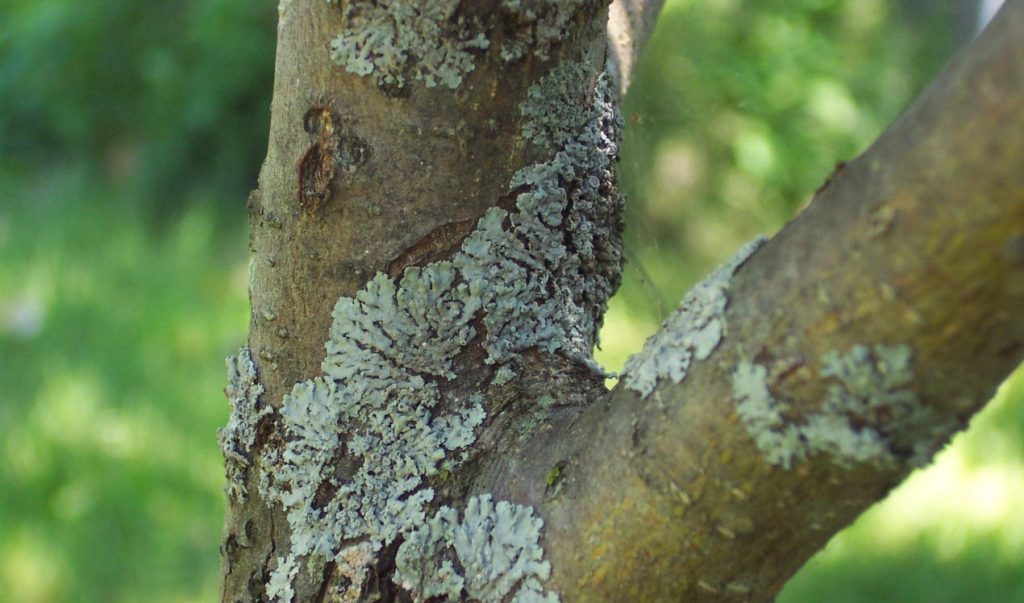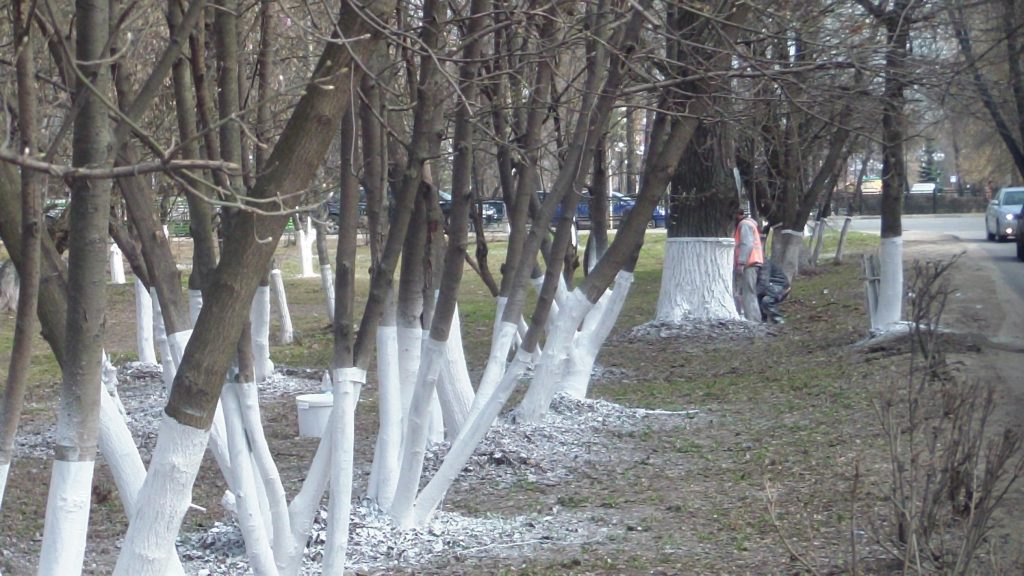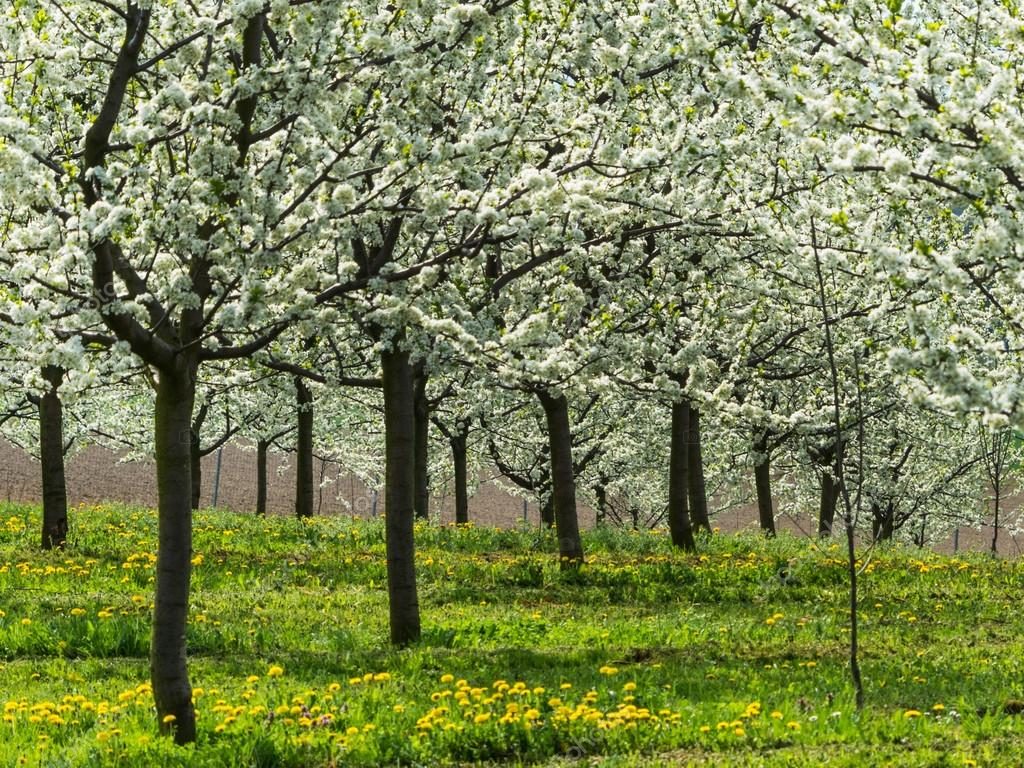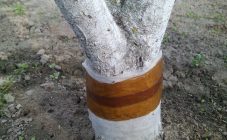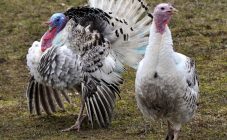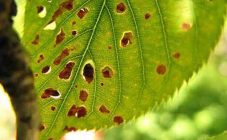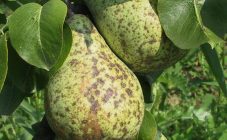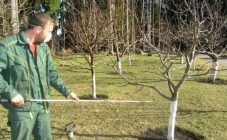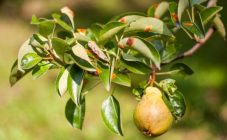When the bark of trees cracks, it has a negative impact on their health and fruiting. It is possible that the fruit on such trees will change their taste or they will die altogether. Having figured out why the bark is cracking on fruit trees and how to treat it, you can save the harvest, or even the whole garden.
Cause
There may be several reasons that the bark begins to crack on the trunk of a young fruit tree. Among the most significant are the following:
- Freezing. The sap of the plant expands when it freezes. The peel, unable to withstand the pressure of the frozen juice, bursts, flakes off.
- Solar or thermal burn. If brown spots become noticeable on the trunk of the tree, this is the first sign that one of these burns has formed on its hyaloderm. Often they are the result of exposure to the first bright spring sun or a sharp change in temperature after winter, which leads to disruption of the structure of ectoderm tissues. This provokes cracking and cracking.
- With a massive harvest in summer or a thick layer of snow on a tree in winter, there is strong pressure on its bark. This provokes cracking.
- Damage to the bark by rodents or insects can also lead to flaking.
- Infection of a tree with diseases such as black cancer can provoke the formation of cracks.
- With too active use of fertilizers, the tree begins to grow rapidly, which causes the bark to crack.
Experts believe that trees are at greatest risk:
- that grow on soils where groundwater is too close to the surface;
- incorrectly cut;
- which have a very low winter hardiness;
- planted too often;
- excessively fertilized.
It is not enough to know why the bark is cracking on fruit trees, it is necessary to be able to correct the situation, as well as to know what preventive measures will help to avoid this problem.
What to do
If this problem is not resolved in a timely manner, pathogenic bacteria, as well as the larvae of harmful insects, accumulate in the cracks. This can adversely affect the growth of the tree.
To treat sunburns, remove the dead tissue with an iron scraper.
Then soak a cloth in Bordeaux mixture and moisten the bark of the tree. After 2 - 3 hours, the wound on the bark must be treated with garden varnish. To prepare it, beeswax, sulfur and gasoline for lighters are mixed. Dissolve the mixture in a water bath and stir.
If cracks are formed as a result of exposure to rodents, at the beginning of spring such plants must be cut short. Treat damaged areas with a weak solution of potassium permanganate, and then lubricate with garden varnish. Such trees require special care and attention. This is necessary in order for the tree to gain strength and get stronger after damage.
If the cause of the formation of cracks is the defeat of the hyaloderm by insects, experienced gardeners recommend establishing the degree of damage to the bark. For this, the wood is carefully pierced with a knife. If there are healthy and hard patches underneath, the plant can still be saved. For this, an old and damaged bark is removed with an iron scraper, under which not only insects, but also their larvae accumulate.After that, the tree trunk is treated with drugs such as Canfidor, Calypso or Antizhuk. If deep cracks are visible on the barrel, the drug is injected into them with a syringe. After a few days, the tree trunk must be whitewashed with lime.
If the plant has large cracks (more than 10 cm wide), it is more difficult to help it. After removing the old bark, a layer of a mixture of clay and cow dung should be laid on the wound. The oiled area is wrapped in plastic wrap, which is fixed to the trunk with a rope. This will help prevent the mixture from drying out.
Often, during severe frosts, frost cracks can form in the bark of a tree. They take much longer to heal. To do this, experienced gardeners recommend adhering to the following recommendations:
- It is better to start treatment in the summer.
- Remove all damaged or dead bark with an iron scraper.
- Treat cracks with copper sulfate 5%.
- After the solution dries, grease the damaged area with garden varnish.
- If the wound is large, the stem of the tree is pulled together with a strong wire. This will help speed up the healing process of the crack.
Sometimes cracks are caused by black cancer. The disease is caused by a pathogenic fungus, the spores of which spread rather quickly. Symptoms of the disease are the appearance of purple spots on the bark, which gradually turn into cracks. To treat such a plant, it is necessary to remove the old hyaloderm and disinfect the affected area. To do this, you can use a Bordeaux mixture, copper sulfate or a solution of potassium permanganate. After 2 - 3 hours after that, the treated area is smeared with garden varnish. If the degree of damage to the bark does not allow removing the diseased area, experienced gardeners recommend destroying the plant. This will prevent infestation of other fruit trees in the garden.
Preventive actions
In order to avoid cracking of the top layer of wood of fruit trees, it is necessary to carry out prevention. To do this, you need to perform the following manipulations:
- Whitewash the bole of trees. The concentration of lime solution used to whitewash young trees should be less than that used to treat mature plants. Whitewashing is performed twice a season (in autumn and spring).
- By the onset of winter, the trunk of the tree must be insulated. For this, burlap or special material is used. Thanks to this, it will be reliably protected not only from winter frosts, but also from sunburn in spring.
- Furrowing also prevents cracking in the wood. For this, longitudinal cuts with a depth of no more than 2 mm are made on the bark of trees with a disinfected sharp knife. In young plantings, this procedure is carried out 4 years after planting. Furrowing is repeated no more than once every 5 years.
- To avoid damage to the tree by rodents for the winter, the trunk is tied with roofing material or wrapped in barbed wire. You can also achieve positive results by covering the trunk with thorny branches. Rodents can also be controlled by treating the trunk with a mixture of equal amounts of carboxylic acid, cow dung and clay.
- To avoid the appearance of cracks as a result of mechanical damage, experienced gardeners recommend timely harvesting on fruit trees, and shaking off the accumulated snow from the branches in winter. This will help reduce the stress on the tree branches.
Don't think that bark cracking is a trifle. If you do not start treating the tree in a timely manner, not only the volume of the crop may suffer, but the whole tree as well, it may die.
